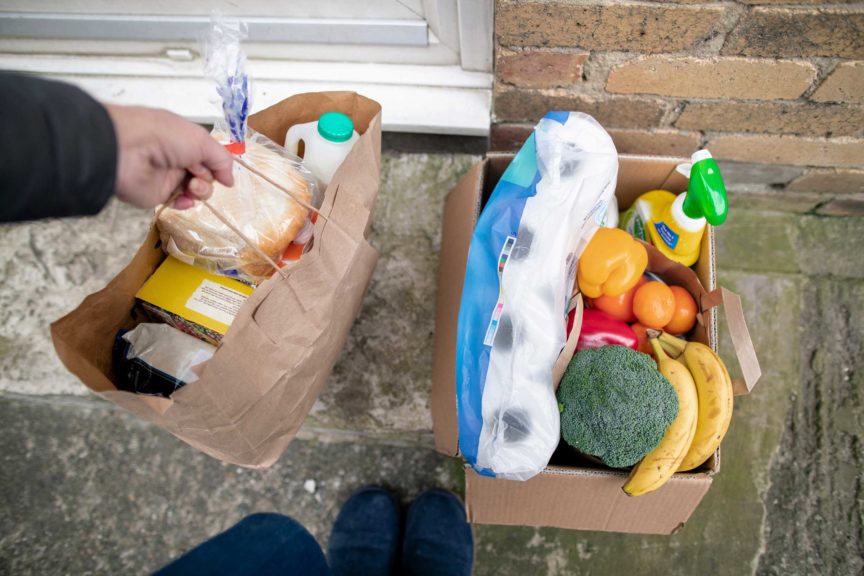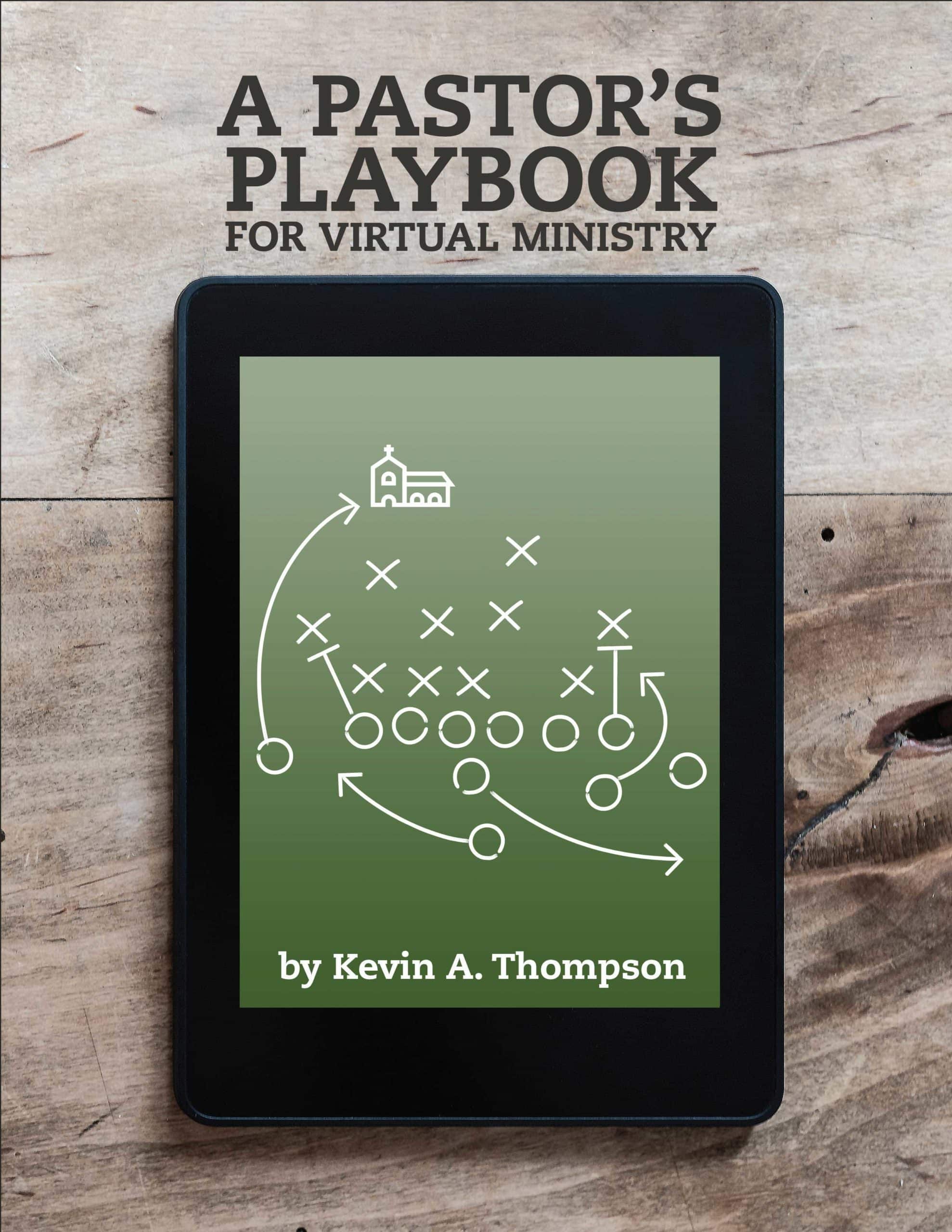The coronavirus has disrupted our lives more than any other global crisis in modern memory. Every aspect of our lives has been impacted to some degree, and church has been deeply affected.
Whatever happens and however long this goes on, the new normal on the other end of it will be different.
Churches have been scattered, and church leaders have been sent scrambling to figure out how to maintain weekend services, home groups, and financial giving through online means.
Still, most churches have been able to continue. Every church is doing things differently now, but they’re still doing things. And that’s thanks to the technology, infrastructure, and the know-how that is available.
Could you imagine if this had happened fifty years ago?
Now that we’ve been doing this a while, with lots of trial and error, some lessons and best practices are emerging. Whatever happens and however long this goes on, the new normal on the other end of it will be different.
As with any crisis that doesn’t kill us, we find things, people, services, devices, and abilities along the way that we never knew existed and never made use of. Some of these we’ll stop needing after churches can begin meeting together again. But some of them we’ll keep.
Technical Lessons Learned
One category concerns the very practical lessons about the technical aspects of doing church online.
As with any crisis that doesn’t kill us, we find things, people, services, devices, and abilities along the way that we never knew were there and had never made use of.
That’s everything from having a great internet connection when sending your services out, to emailing your Sunday school lessons, to making sure your video and audio setup is working correctly before you go live on Sunday morning.
Many pastors are learning that preaching into a camera is hard work, and some feel they aren’t cut out for it. Others find they actually like the solitary aspect of preaching from a small studio without a crowd.
Some church leaders are finding that they miss the ability to read the room while they’re speaking. But others are realizing that they’d been reading the room all wrong, and without those confusing signals coming from the pews, their teaching has become more even and focused.
Churches doing things online find that some things work better for them when prerecorded, while other things are better live. It’s different from group to group, but teams are finding their rhythms and preferences.
New Digital Ways of Church

Some lessons learned are that we have to behave in new ways when doing church digitally. For example, when you’re speaking into a laptop or other device, it’s natural to look at the face of the person you’re talking to if you can see them on the screen. But where their face is, is not where your camera is. So, to everyone watching out in TV Land, it looks like you’re looking in the wrong place.
If you want to appear to be speaking right into the eyes of the viewers, you have to not look into anyone’s eyes at all. Instead, you have to stare into that little black circle that is the camera lens.
Another good lesson about doing church digitally is to let good enough be good enough. You have to let perfectionism wait until things go back to normal, if they ever do. Actually, perfectionism might be something to let go of entirely!
A few final technical tips:
- Use a tripod or other stable base to hold your camera.
- Turn the phone horizontally so the broadcast looks like a movie, not a selfie.
- Prefer close-ups over wide shots. Viewers would rather see your expression than what shoes you’re wearing.
Bright Side Lessons Learned
Crises bring out the best and worst in people. They amplify the pressure on us and squeeze out what’s already inside us. They force us to explore areas we’d never looked into and learn skills we hadn’t needed before.
Sometimes, the things we’re forced to do in a crisis turn out to be surprisingly useful or wonderful, and we end up keeping them even after the dust settles.
Crises amplify the pressure on us and squeeze out what’s already inside us.
Many churches have found that hosting services online has allowed them to reach people they hadn’t reached before. Family members of the usual churchgoers might just pay attention if the church service is on in the living room. Shut-ins and those who can’t drive anymore are suddenly back “in” church.
When churches can start meeting in person again, what will happen to these new audiences? They probably won’t be willing or able to darken the doorposts of the church. Many churches are finding that they’re going to want to retain some of their online offerings to continue reaching these people after the virus.
Opportunities All Around Us

Another positive lesson learned is that this crisis is giving the church an unprecedented opportunity to rise up and serve the community. People living behind locked doors, afraid to go even to the grocery store, may find the local church bringing food right to their porch. Errands and chores and other needs are being met as Christians step up to serve their neighbors.
Whether this causes a great awakening in the nation or makes no discernable difference in the community, it’s a brilliant example of giving a cup of cool water to someone in Jesus’ name. Churches are seizing this moment to be the hands of feet of Jesus, and He is pleased.
Another advantage to this crisis is that Christians across the globe are experiencing similar things. They’re all impacted by COVID-19 to some degree. Everyone’s life has been disrupted by one single factor. When is the last time that was true?
Of course, we share the same Lord with every other Christian on the planet. But, rarely have all of us been discussing the same topic at every dinner table around the world.
We share this commonality with all humanity, in fact, not just Christians. This is truly a global moment, and all of mankind is walking through it together. The Muslim in Iran, the Buddhist in Beijing, the Catholic in Belfast, and the Methodist in Montana are dealing with this virus.
We’re truly all in this together.
Hard Lessons Learned
While much of what churches are learning about going digital is positive, some of it is not.
For example, many churches that had not been emphasizing online giving before this year found most of their members’ tithes all but vanishing. When a family doesn’t travel to the church building, the check doesn’t get written and dropped into the offertory plate.
Churches that had already been receiving more than half of their giving through online channels are doing much better than those that are trying to teach the membership new ways to tithe in the midst of this pandemic.
Similarly, churches that had not put three to four months’ worth of operating expenses in savings, or who had not budgeted on ninety percent or less of last year’s budget, are hurting right now. Budgets built on faith and the expectation that every year will be bigger and better than the year before may not be suitable for a COVID-19 year.
What will the next fiscal year’s budget look like? Many churches will take this year’s lesson to heart and budget more conservatively.
Another hard lesson we should be learning is that a cavalier attitude toward masks, hand-washing, meeting together, and social distancing—even if done to demonstrate faith—will not be welcomed by all.
If unbelievers see Christians disregarding health authorities’ guidelines, thus endangering the lives of many vulnerable people in the name of Jesus, it may not move them closer to God.
Interaction Is Important
A final lesson to be learned from doing church digitally is that people really do crave the human touch. Even if we were able to perfect virtual church services and keep right on going without missing a step, a purely separated congregation is not God’s plan for the church.
We’re truly all in this together.
We need each other. We need hugs, smiles, and the sound of Mrs. Morris booming out the song in the row right behind us.
When churches are allowed to meet in person again, don’t worry that no one will return. It won’t just be the extroverts flocking to the church building, either. Even the introverts among us need to stand shoulder to shoulder with other sojourners on the narrow way.
As the church, we move forward together.
In the end, whether we’re doing church online or in person, the main things are still the main things.
We still love and worship the Lord Jesus Christ, and we still love our neighbor. We still do good to our neighbor, especially those of the body of Christ. We still look for chances to visit those in prison and do good to those who are downcast. We still pick up the phone and look in on each other. We still raise our voices to God together. We still study the eternal Word.
The gospel is wine that is ever-new, and it pours quite nicely into any new wineskin—even a digital one.
In the end, whether we’re doing church online or in person, the main things are still the main things.

A Pastor’s Playbook for Virtual Ministry

A Pastor’s Playbook for Virtual Ministry









